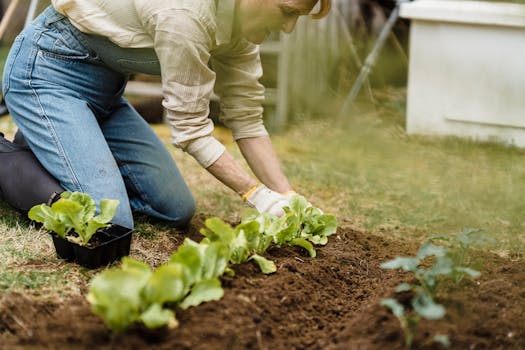Growing your own vegetables is a rewarding way to enjoy fresh, organic produce while promoting well-being. Whether you’re planning a full kitchen garden or growing a few plants in containers, this month-by-month guide provides helpful advice for sowing and planting vegetables year-round.
Planning and Preparation
Before you begin planting, consider the soil temperature, your climate zone, and the specific needs of each vegetable. Using a soil thermometer can help determine the best time for sowing seeds. Plan ahead by consulting seed catalogs and organizing your planting schedule to maximize your harvest.

Monthly Vegetable Planting Guide
January
- Indoors: Start onions from seed in a greenhouse. Begin “chitting” early potato varieties to prepare them for planting.
- Outdoors: January is mostly for planning, as the soil remains too cold for direct sowing.
February
- Indoors: Sow tomatoes, peppers, eggplants, and cucumbers in pots or trays. Start fava beans and hardy vegetables under cover.
- Preparation: Enrich soil and protect beds with tarpaulins to prevent waterlogging.
March
- Indoors: Continue with tomatoes, cucumbers, and eggplants. Start pumpkin and pepper seeds.
- Outdoors: Sow asparagus crowns, beetroot, leeks, parsnips, peas, and spinach in warmer regions.
April
- Indoors: Plant zucchini and sweetcorn in pots for transplanting later.
- Outdoors: Sow broccoli, carrots, lettuce, and chard. Plant maincrop potatoes and onion sets.
May
- Outdoors: Begin hardening off tender plants like zucchini and pumpkins before transplanting. Sow French beans and summer vegetables like lettuce and rocket.
June
- Outdoors: Direct sow fennel, zucchini, peas, and beetroot. Make successive sowings of radish and salad greens for continuous harvests.
July
- Outdoors: Last chance to sow French beans. Start spring cabbage and pak choi. Plant out winter leeks into their final positions.
August
- Outdoors: Sow spinach, kohlrabi, and hardy winter salad leaves. These crops thrive in cooler temperatures and can be overwintered for a spring harvest.
September
- Outdoors: Plant winter salads like lamb’s lettuce and arugula. Continue with late sowings of spinach and chard.
October
- Outdoors: Plant garlic and early fava beans for a spring harvest. Prepare beds for winter with organic mulch.
November
- Outdoors: While most sowing slows, you can still plant asparagus crowns. Harvest brassicas, root vegetables, and winter greens.
December
- Planning: Use this time to plan next year’s garden, prepare soil, and order seeds. Plant winter salads under cloches or in cold frames.
FAQs
What month should I plant vegetables?
Planting schedules depend on your climate and the vegetable variety. March and April are ideal for starting hardy crops outdoors, while tender plants like zucchini and sweetcorn thrive in late spring and early summer. Use a vegetable planting calendar to guide your efforts.
Can I plant vegetables in winter?
Yes! Hardy crops like garlic, winter salads, and fava beans can be sown in the colder months, provided they’re protected from frost with cloches or cold frames.
Final Tip:
Keep records of your planting successes and challenges to improve next year’s harvest. Whether you’re growing on a balcony or in a large plot, a year-round approach to planting ensures a steady supply of fresh produce.
Start small, experiment with varieties, and enjoy the process of growing your own food!


